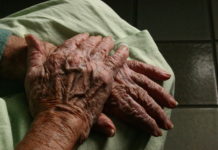Earth’s lone moon – better known as the Moon – is thought to have broken off from planet Earth hundreds of millions of years ago, bringing with it minerals and molecules that had rested on Earth’s surface and throughout its crust and mantle since the dawn of time.
For at least the past century, scientists have wondered whether the Moon has been home to liquid or solid water. Almost unbelievably, scientists found the presence of solid water on the surface of Mars, some hundreds of thousands of miles away from the Moon via a rover that has explored the top of the Red Planet for well over a decade.
Scientists from the University of Hawaii and Brown University have said that they used three tried-and-true means of testing lunar and planetary bodies for the presence of dihydrogen monoxide – that’s the chemical name for water.
If not for data taken by the Moon Mineralogy Mapper of NASA – the device is also called M3 – Shuai Li, Richard Elphic, and company would not have been able to draw the conclusions that they released to the world in a peer-reviewed report yesterday.
The Moon is home to water ice on both of its poles. Distributions of such ice were spotted on both poles, though the Moon’s northern pole’s distribution of ice was spread less densely then its southern counterpart; the southern pole of planet Earth’s one and only moon was found to be home to more ice than its northern counterpart, as well.
Most of the aforementioned solid water was found in lunar craters throughout both poles. The team of scientists responsible for the findings was led by the University of Hawaii’s own Shaun Li and included the likes of Richard Elphic from the Ames Research Center, a part of the United States’ space program, NASA.
M3, the aforementioned lunar satellite, was launched into space ten years ago by the Indian Space Research Organization with just one goal – definitively determining whether the Moon was home to ice or water.
The Moon Mineralogy Mapper first sought to find out whether light reflected off of ice, a signature property of frozen water. Further, another one of M3’s specific goals was to determine whether infrared light was absorbed by substances thought to be water ice.
The temperature of the Moon doesn’t get much higher than negative 250 degrees Fahrenheit where deposits of water ice are located.






